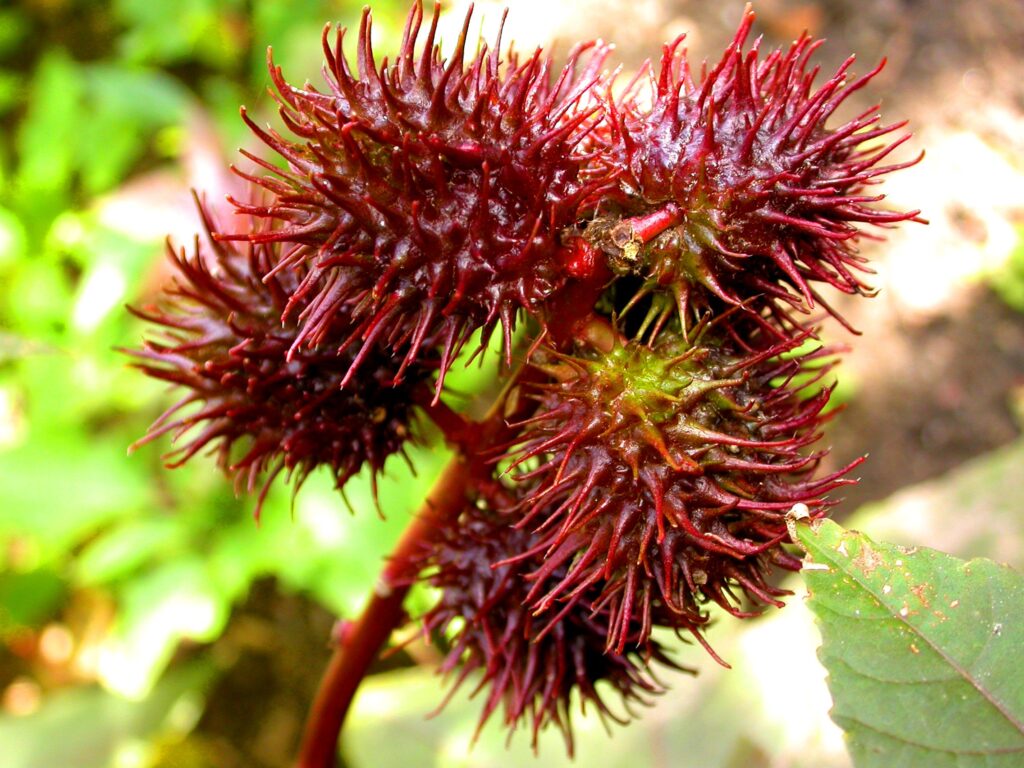Ricin is a potent toxin derived from the seeds of the castor oil plant, Ricinus communis. Known for its extreme toxicity, ricin has garnered attention not only for its potential as a bioweapon but also for its fascinating history and biological mechanisms. This article delves into the nature of ricin, its uses, dangers, and the measures taken to mitigate its risks.

What is Ricin?
Ricin is a highly toxic protein that is extracted from the castor bean. The castor oil plant is native to Africa and the Middle East but is now grown in many regions around the world. The seeds contain two key components: ricin, the toxic substance, and castor oil, which is safe for human consumption and widely used in cosmetics and pharmaceuticals.
When ricin enters the body—whether through ingestion, inhalation, or injection—it inhibits protein synthesis, leading to cell death. The lethal dose of ricin is extremely low; as little as 1 milligram can be fatal if ingested or injected, making it one of the most toxic substances known.
Historical Context
Ricin has a dark history, often associated with espionage and political assassinations. One of the most notorious uses of ricin was in the 1978 assassination of Georgi Markov, a Bulgarian dissident. He was killed in London by a pellet containing ricin that was injected into his leg using a specially modified umbrella. This dramatic incident highlighted ricin’s potential as a weapon and raised awareness about the dangers of biological agents.
Throughout the years, ricin has been linked to various plots and attempts to harm individuals, often in politically charged contexts. These historical events have contributed to the ongoing discussion about the regulation and control of biological agents.
Mechanism of Action
Understanding how ricin works helps explain why it is so deadly. Once ricin is inside the body, it targets ribosomes, the cellular structures responsible for protein synthesis. It essentially halts the production of proteins by inactivating ribosomes, leading to cell dysfunction and ultimately cell death.
Symptoms of ricin poisoning can appear within hours of exposure and may include:
- Abdominal pain
- Vomiting
- Diarrhea
- Dehydration
- Organ failure
In severe cases, death can occur within a few days if treatment is not administered promptly.
Uses of Ricin
While ricin is primarily known for its toxicity, it has also been studied for potential medical applications. Researchers have investigated its use in cancer treatments, as certain forms of ricin can be modified to selectively target and kill cancer cells while sparing healthy cells. This approach involves creating a conjugate of ricin that is linked to an antibody targeting cancer cells, allowing for a more targeted delivery system.
However, the development of ricin-based therapies is still in the experimental stage and raises ethical concerns regarding its potential misuse.
Safety and Security Measures
Given its lethality, ricin is classified as a select agent in many countries, meaning it is regulated under strict guidelines to prevent misuse. In the United States, the Centers for Disease Control and Prevention (CDC) and the Animal and Plant Health Inspection Service (APHIS) monitor and regulate the possession and use of ricin.
Laboratories that work with ricin must follow rigorous safety protocols, including:
- Proper containment and disposal methods
- Employee training on handling hazardous materials
- Emergency response plans for potential exposure
These measures aim to prevent accidents and ensure public safety, especially in environments where ricin might be present.
Public Awareness and Myths
Despite its notoriety, there are many myths surrounding ricin and its use. Some people mistakenly believe that ricin can be easily made at home or that it is a commonly used poison in criminal activities. In reality, the extraction and use of ricin require specific knowledge and equipment, making it a difficult toxin to handle without proper training.
Public awareness campaigns aim to educate people about the dangers of ricin and other toxic substances. Understanding how ricin works and its potential consequences can help dispel myths and promote safety.
Conclusion:
Ricin is a deadly toxin with a complex history, from its natural origins in the castor bean to its use in espionage and potential medical applications. As one of the most toxic substances known, it poses significant risks, necessitating strict regulations and safety measures. While it has gained notoriety as a weapon, ongoing research into its therapeutic potential illustrates the dual-edged nature of many biological agents. Educating the public about ricin and its dangers is crucial for both safety and understanding the broader implications of biotoxins in our world. The story of ricin serves as a reminder of the delicate balance between scientific discovery and ethical responsibility.







